Autodesk Meshmixer Support Generation Overview
- Tutorial
I’ve heard about the generation of supports in meshmixer for a long time, and finally got around to try its capabilities for FDM printing. I understand that this question has been well studied, but suddenly a little lesson will be useful to someone. Let's go step by step.
Download meshmixer. Click on the import button.
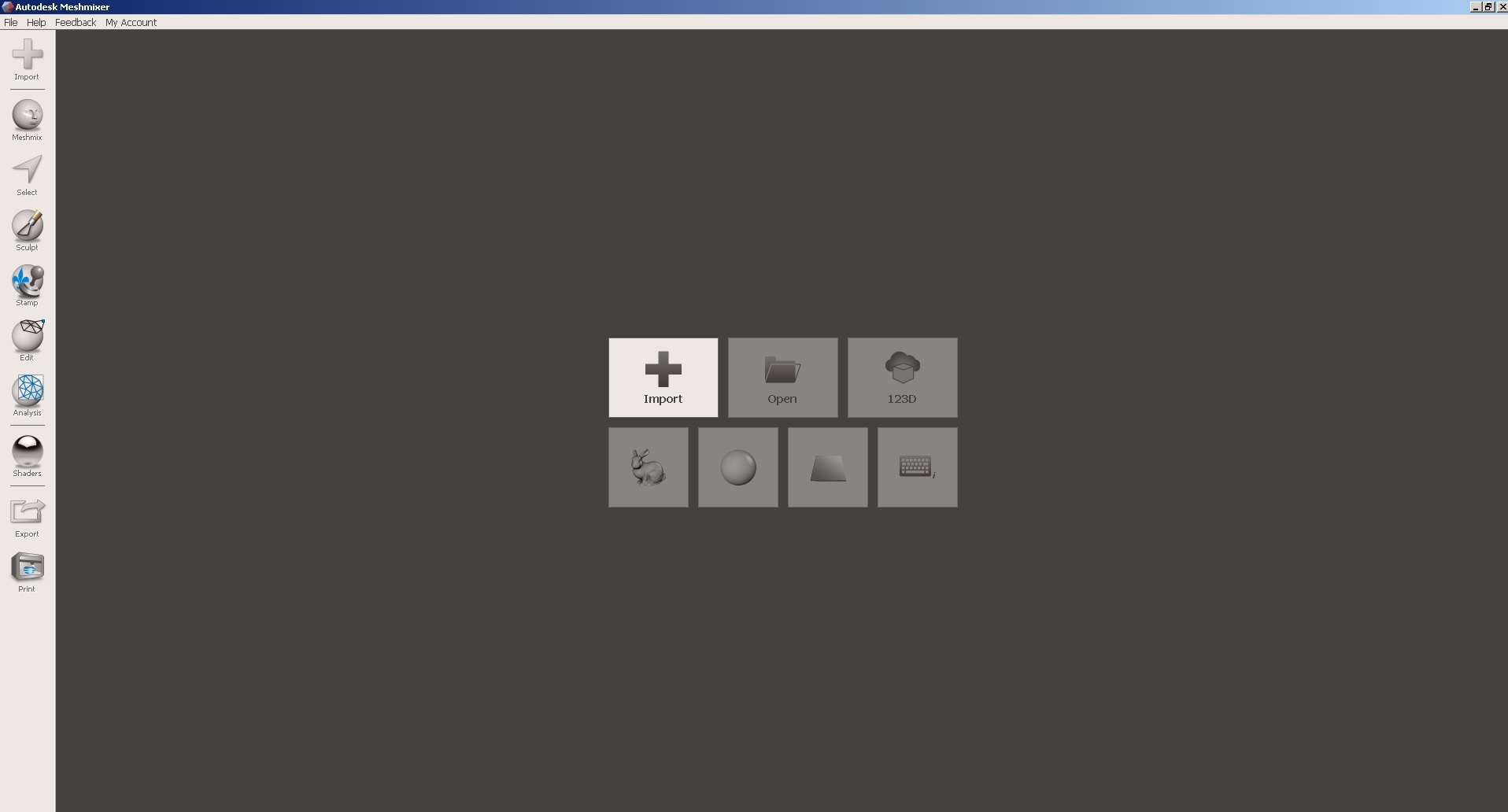
and select the file with the model.

To position the model on the desktop, use the align command.

The operation is carried out in two steps according to the parameters indicated in the figures below.

At each step, the program shows the position of the model after completion.

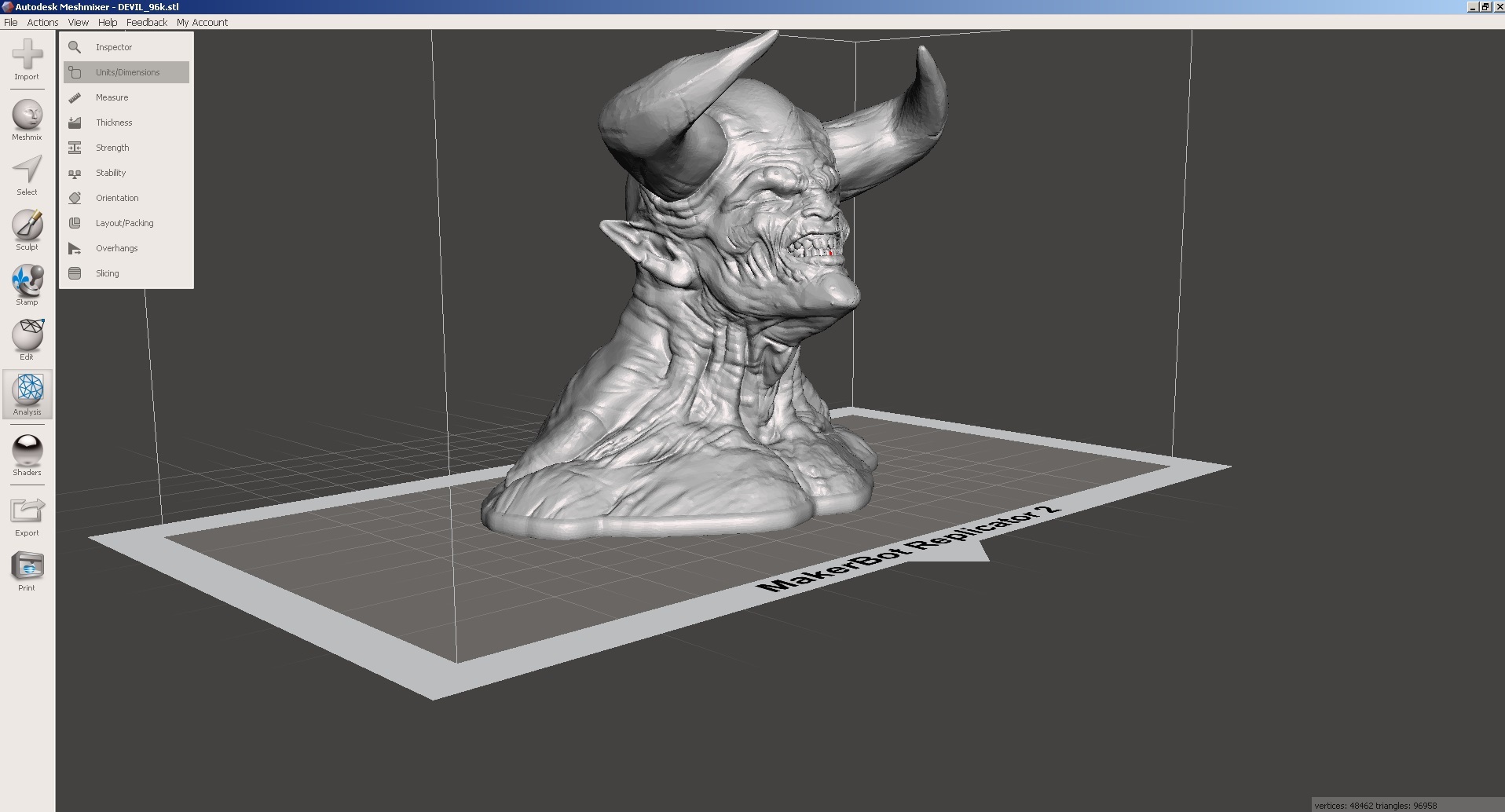
Next, you need to set the model dimensions using the Unit / Dimension command. Dimensions

are changed using color indicators.

Finally, run the Overhand command (support).

Let's look at the main parameters of the command.

Angle Thresh - sets the angle of the model for which support will be generated. At large values, the area of support generation increases (the area is tinted in red).

Max angle is the angle at which support is built. The parameter determines the form of the resulting
Density support - support density. Adjusts the number of support items.
Layer Height - the height of the support layer. This parameter must be specified the same as when starting to print the model subsequently. If you want to print a model with a layer thickness of 0.2 mm, then the Layer Height value also needs to be done 0.2.
Post Diameter - the diameter of the main part of the support. If you use SLA technology, you can use small values, and for FDM printers, I recommend setting values from 4 and higher.
Top Diameter - The diameter of the top of the support. I recommend doing this parameter less than Post Diameter, as this simplifies the process of removing support. However, too small values can lead to a weakening of the relationship between the model and support, breaking support during the printing process.
Base Diameter is the diameter of the base support. I recommend doing this parameter more than Post Diameter, as this increases the area of contact between the support and the table, and therefore its stability.
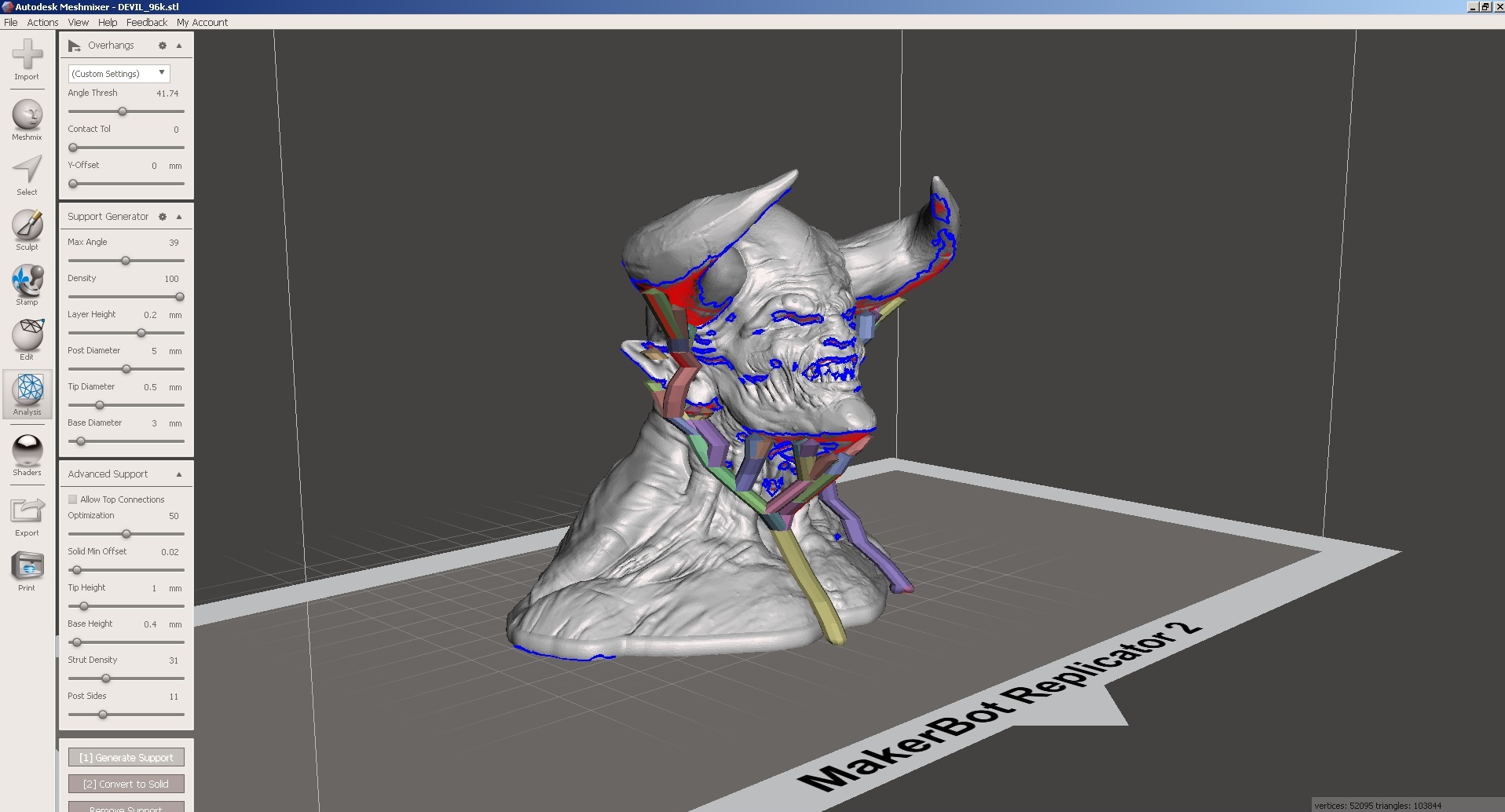
To create support, click on the Generate Support button.
If you are satisfied with the result, feel free to click on the Convert to Solid button.

After clicking the Convert to Solid button, you need to select one of the options:
New object - as a result of the command, support will be created as a separate three-dimensional body. Subsequently, this body can be assigned an extruder different from the main model. You can use this option if your 3D printer has at least two extruders.
Replace existing - support will be added to the main model. The simplest option, which requires only one extruder. In our case, we choose it.

Below is another result of generating support.

To save the result in STL format, run the Export command.

Save the file to disk.

Now let's print the model on a 3D printer. I will use the Prism Uni 3D printer.
To do this, load the model into Cura software.

And we set the printing parameters.

We start the model for printing.

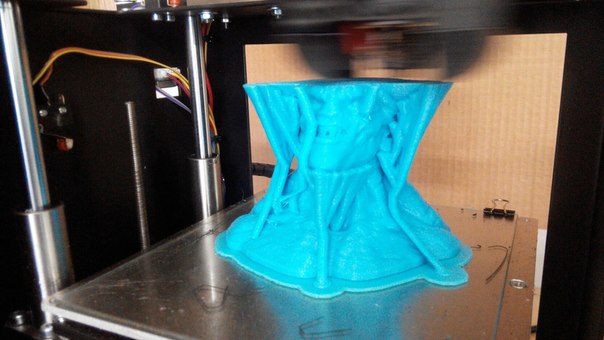
And we get the final result, from which it remains only to remove the support.

After separation of support

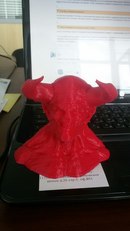
Download meshmixer. Click on the import button.

and select the file with the model.

To position the model on the desktop, use the align command.

The operation is carried out in two steps according to the parameters indicated in the figures below.

At each step, the program shows the position of the model after completion.


Next, you need to set the model dimensions using the Unit / Dimension command. Dimensions

are changed using color indicators.

Finally, run the Overhand command (support).

Let's look at the main parameters of the command.

Angle Thresh - sets the angle of the model for which support will be generated. At large values, the area of support generation increases (the area is tinted in red).

Max angle is the angle at which support is built. The parameter determines the form of the resulting
Density support - support density. Adjusts the number of support items.
Layer Height - the height of the support layer. This parameter must be specified the same as when starting to print the model subsequently. If you want to print a model with a layer thickness of 0.2 mm, then the Layer Height value also needs to be done 0.2.
Post Diameter - the diameter of the main part of the support. If you use SLA technology, you can use small values, and for FDM printers, I recommend setting values from 4 and higher.
Top Diameter - The diameter of the top of the support. I recommend doing this parameter less than Post Diameter, as this simplifies the process of removing support. However, too small values can lead to a weakening of the relationship between the model and support, breaking support during the printing process.
Base Diameter is the diameter of the base support. I recommend doing this parameter more than Post Diameter, as this increases the area of contact between the support and the table, and therefore its stability.

To create support, click on the Generate Support button.
If you are satisfied with the result, feel free to click on the Convert to Solid button.

After clicking the Convert to Solid button, you need to select one of the options:
New object - as a result of the command, support will be created as a separate three-dimensional body. Subsequently, this body can be assigned an extruder different from the main model. You can use this option if your 3D printer has at least two extruders.
Replace existing - support will be added to the main model. The simplest option, which requires only one extruder. In our case, we choose it.

Below is another result of generating support.

To save the result in STL format, run the Export command.

Save the file to disk.

Now let's print the model on a 3D printer. I will use the Prism Uni 3D printer.
To do this, load the model into Cura software.

And we set the printing parameters.

We start the model for printing.


And we get the final result, from which it remains only to remove the support.
After separation of support


